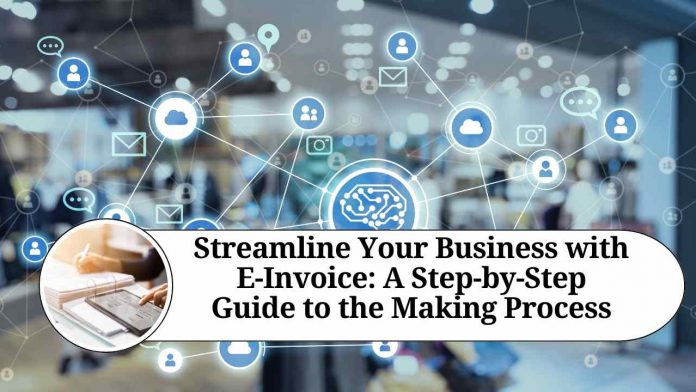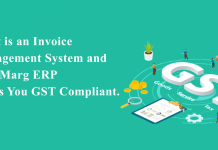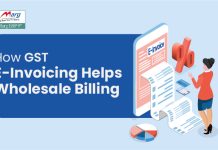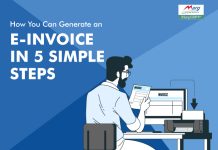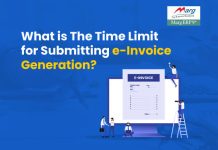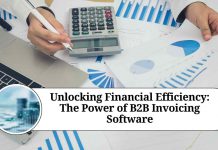Recent Updates on e-Invoicing:
10th May 2023
The CBIC’s latest action to support the government’s objective of shifting to a digital economy involves the introduction of the 6th phase of e-invoicing. Starting from August 1st, 2023, businesses with an annual turnover of ?5 crore or higher since 2017-18 will be obligated to generate e-invoices.
Introduction
In today’s digital age, traditional paper invoices are gradually being replaced by electronic invoices (e-invoices). E-invoicing offers numerous benefits, such as increased efficiency, cost savings, and enhanced accuracy. By adopting e-invoicing, businesses can streamline their billing processes and create a more sustainable and eco-friendly environment. In this blog, we will provide you with a step-by-step guide to the e-invoice making process, helping you embrace the future of invoicing.
Understand the Concept of E-Invoicing:
To embark on the e-invoice making process, it is crucial to have a clear understanding of what e-invoicing entails. E-invoicing refers to the digital exchange of invoice information between a supplier and a buyer, using standardized electronic formats. These formats may vary depending on the country or industry regulations. Generally, e-invoices are XML or PDF files that contain structured data for easy processing and integration with accounting systems.
Choose an E-Invoicing Solution:
To create and send e-invoices, you will need to select a suitable e-invoicing solution. There are various options available, ranging from standalone e-invoicing software to integrated accounting systems that include e-invoicing capabilities. Consider your business requirements, budget, and scalability when choosing a solution that best fits your needs.
Set Up Your E-Invoicing System:
Once you have chosen an e-invoicing solution, you need to set up the system to align with your business processes. This includes configuring invoice templates, defining invoice numbering formats, and integrating the e-invoicing system with your existing accounting software or ERP system. Ensure that you comply with any legal or regulatory requirements related to e-invoicing in your jurisdiction.
Create E-Invoice Templates:
Designing professional and consistent e-invoice templates is crucial for maintaining your brand identity and ensuring clarity for your customers. Include necessary information such as your company logo, contact details, invoice number, invoice date, payment terms, itemized list of products or services provided, quantities, prices, and applicable taxes. Remember to include any specific legal requirements based on your jurisdiction.
Generate E-Invoices:
Once your e-invoicing system is set up and templates are created, you can begin generating e-invoices for your transactions. Input the required data into the system, such as customer details, invoice line items, and applicable taxes. The e-invoicing software will then automatically populate the template with the provided information and generate the invoice in the desired format.
Conclusion
Embracing e-invoicing offers businesses a multitude of benefits, including increased efficiency, cost savings, improved accuracy, and enhanced environmental sustainability. By following the step-by-step guide outlined in this blog, you can streamline your invoicing process and pave the way for a more digitized and automated financial workflow.
Read more useful content:
Frequently Asked Questions (FAQs)
Q1: What is an e-invoice?
A1: An e-invoice refers to a digital invoice that is created, sent, and received electronically between businesses. It contains structured data in a standardized format, allowing for automated processing and integration with accounting systems.
Q2: Why should I switch to e-invoicing?
A2: E-invoicing offers numerous benefits, such as increased efficiency, cost savings, reduced errors, faster payment cycles, and improved environmental sustainability. It streamlines the invoicing process and provides better visibility into financial transactions.
Q3: What are the legal requirements for e-invoicing?
A3: Legal requirements for e-invoicing vary across jurisdictions. It is essential to comply with the regulations set by your country or industry. These requirements may include specific invoice formats, digital signatures, archiving rules, and data retention periods. Consult with local authorities or seek professional advice to ensure compliance.
Q4: Do I need specialized software for e-invoicing?
A4: While specialized e-invoicing software can streamline the process, it is not always mandatory. Some accounting software or enterprise resource planning (ERP) systems have built-in e-invoicing capabilities. Alternatively, you can use standalone e-invoicing solutions or even create e-invoices manually using standard office tools like spreadsheets or word processors.
Q5: How do I choose the right e-invoicing solution?
A5: When selecting an e-invoicing solution, consider factors such as your business requirements, scalability, integration capabilities with existing systems, cost, user-friendliness, and customer support. Evaluate different options, read reviews, and seek recommendations from trusted sources before making a decision.
Q6: What information should be included in an e-invoice?
A6: An e-invoice should include essential details such as your company’s name and address, customer’s name and address, invoice number, invoice date, payment terms, itemized list of products or services provided, quantities, prices, applicable taxes, and any additional legal requirements based on your jurisdiction.
Q7: How do I ensure the authenticity and integrity of e-invoices?
A7: To ensure the authenticity and integrity of e-invoices, consider using digital signatures or electronic seals. These cryptographic techniques verify the sender’s identity and protect the invoice data from being tampered with during transmission.
Q8: How are e-invoices delivered to customers?
A8: E-invoices can be delivered to customers through various methods, such as email attachments, secure file transfer protocols (FTP), electronic data interchange (EDI), or through web portals. Choose a delivery method that suits your customer’s preferences and ensures secure transmission of the invoice.
Q9: How long should I retain e-invoices?
A9: Retention periods for e-invoices may vary depending on local regulations. Some jurisdictions require businesses to retain e-invoices for a specific period, typically ranging from 5 to 10 years. Ensure you comply with the data retention requirements applicable in your country or industry.
Q10: Can I convert existing paper invoices into e-invoices?
A10: Yes, it is possible to convert existing paper invoices into e-invoices by digitizing the information and entering it into an e-invoicing system. You may need to reformat the data according to the standardized e-invoice format and ensure accuracy during the conversion process.

